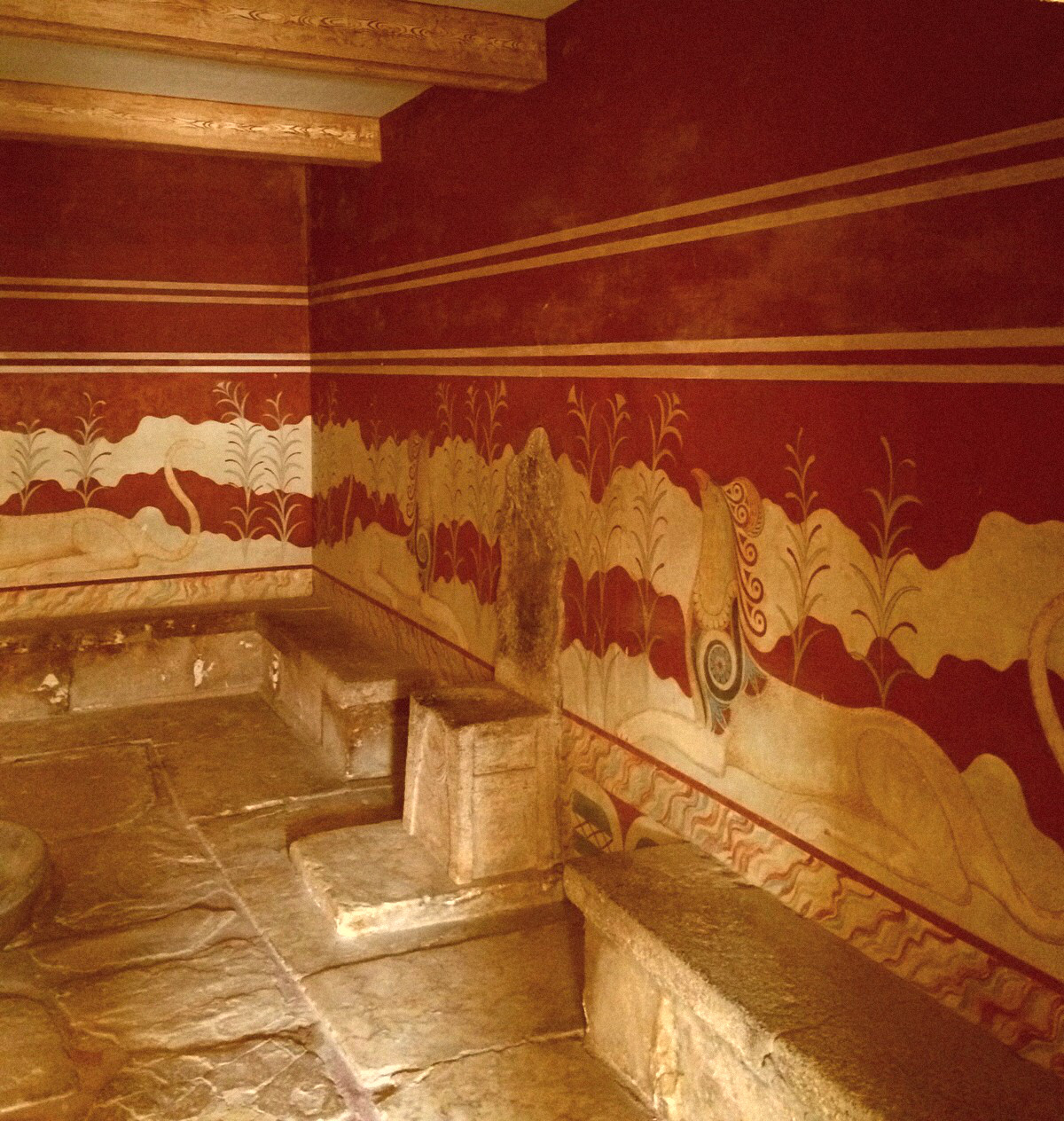The Odyssey 11.568-571, Homer (ca. 650 B.C.)

A picture of King Minos' Throne in the Palace of Knossos, Crete. A replica was donated by the Greek State to the Carnegie Foundation and is exhibited at the Peace Palace in The Hague.
For further information: http://www.jochen-fahrenberg.de/uploads/media/Der_Thron_von_Knossos_Minos_Recherchen.pdf
Greek
Οδύσσεια Ὁμήρου, 11.568-571ἔνθ' ἦ τοι Μίνωα ἴδον, Διὸς ἀγλαὸν υἱόν,
χρύσεον σκῆπτρον ἔχοντα θεμιστεύοντα νέκυσσιν,
ἥμενον· οἱ δέ μιν ἀμφὶ δίκας εἴροντο ἄνακτα,
ἥμενοι ἑσταότες τε, κατ' εὐρυπυλὲς Ἄϊδος δῶ.
English
Homer, Odyssey 11.568-571 (English translation according to Roebuck, Ancient Greek Arbitration, 2001, p. 72):
There I saw Minos, splendid son of Zeus,
holding a golden speaking-staff, laying down customary law for the dead.
There he was, sitting there, and those around were asking him as their lord for judgments,
sitting and standing throughout the wide-doored house of Hades.
German
Homer, Odyssee, Elfter Gesang, Zeilen 568-571
(deutsche Übersetzung nach http://www.digbib.org/Homer_8JHvChr/De_Odyssee?k=Elfter+Gesang)
Und ich wandte den Blick auf Minos, den göttlichen, Zeus' Sohn!
Dieser saß, in der Hand den goldenen Scepter, und teilte Strafe den Toten und Lohn;
sie rechteten rings um den König,
Sitzend und stehend, im weitgeöffneten Hause des Aïs.